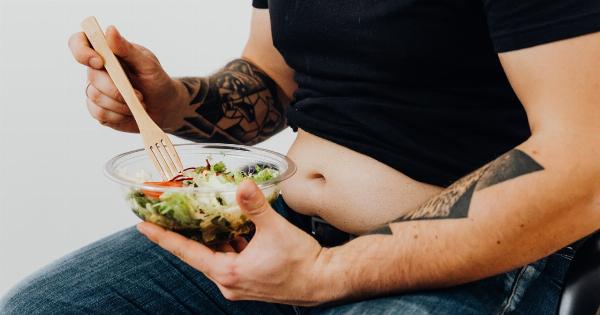If you’re one of those people who want to lose weight and build muscle, you might think that these two goals are mutually exclusive.
There’s a common misconception that in order to lose fat, you need to abandon your efforts to build muscle, or vice versa. But the truth is that it’s possible to do both at the same time. In this ultimate guide, we’ll show you exactly how to lose fat without losing muscle.
1. Calculate Your Caloric Needs
The most important thing to remember when trying to lose fat without losing muscle is to maintain a calorie deficit. However, you need to figure out how many calories you need to consume in order to reach that deficit.
There are many online calculators that will help you determine your maintenance caloric level. Once you’ve found that number, you can subtract between 300 and 500 calories to create your calorie deficit.
2. Eat Enough Protein
Protein is essential for building and maintaining muscle mass. In order to achieve and maintain this, you need to make sure that you’re eating enough protein. A good rule of thumb is to consume about 0.8 grams of protein per pound of body weight.
For example, a person who weighs 150 pounds would need to consume 120 grams of protein daily.
3. Don’t Cut Calories too Drastically
While it’s necessary to maintain a calorie deficit, it’s important not to cut calories too drastically. If you’re not eating enough, your body will turn to your muscles for energy, which can hinder muscle growth.
A gradual reduction of calories over time is more effective and sustainable.
4. Lift Weights
If you want to maintain muscle mass while losing fat, you need to be lifting weights. Resistance training is the most effective way to build and maintain muscle mass.
It’s important to develop a well-rounded training program that focuses on all of the major muscle groups.
5. HIIT Training
High-Intensity Interval Training (HIIT) is an effective way to burn fat while maintaining muscle mass. HIIT involves short, intense bursts of exercise followed by periods of rest.
These intense workouts burn more calories and increase your metabolism, which helps you burn fat even when you’re not working out.
6. Don’t Over-Do Cardio
Cardiovascular exercise is important for overall health and fitness, but too much cardio can actually hinder muscle growth. When you do cardio excessively, your body will start to use muscle for energy, which leads to muscle loss.
A moderate amount of cardio, combined with resistance training, is more effective for losing fat without losing muscle.
7. Stay Hydrated
Drinking enough water is essential for losing fat without losing muscle. Water helps regulate your body temperature, lubricates your joints, and transports nutrients throughout your body.
In addition, staying hydrated can help you feel full, which can prevent overeating.
8. Don’t Skip Meals
Skipping meals can cause your body to break down muscle for energy, which is something you want to avoid. You need to make sure you’re eating enough to fuel your workouts and maintain muscle mass.
In addition, skipping meals can slow down your metabolism, which makes it harder to lose fat.
9. Get Enough Sleep
Sleep is essential for your overall health and wellbeing, but it’s also important for building and maintaining muscle mass. When you sleep, your body repairs and regenerates muscle tissue.
In addition, lack of sleep can increase cortisol levels, which can lead to muscle loss. Aim for 7-8 hours of sleep per night.
10. Monitor Your Progress
It’s important to monitor your progress when you’re trying to lose fat without losing muscle. This will help you stay on track and make adjustments as needed.
There are many ways to track your progress, including taking pictures, measuring your body fat percentage, and tracking your weight.






























